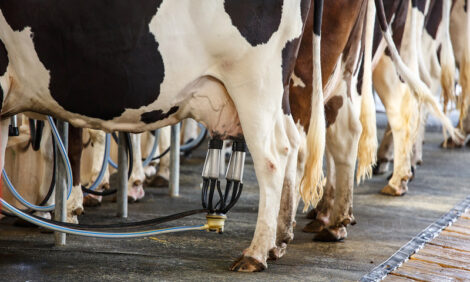



Decline in US import prices could improve inflation outlook
Import prices fall 0.6% in November; up 2.7% year-on-yearUS import prices fell for a fifth straight month in November, pulled down by declining costs for petroleum products and a strong dollar and supporting the view that inflation could continue to moderate in the months ahead, reported Reuters.
The report from the Labor Department on Wednesday followed on the heels of news on Tuesday that consumer prices increased less than expected for the second consecutive month in November.
With inflation subsiding, the Federal Reserve is expected to announce a reduction in the size of its interest rate hikes at the end of a two-day policy meeting on Wednesday. The US central bank - in the midst of its fastest rate hiking cycle since the 1980s - is expected to lift its policy rate by 50 basis points, breaking a string of four straight 75-basis-point increases.
"Fed Chair (Jerome) Powell can chalk up another win in his epic inflation fight," said Christopher Rupkey, chief economist at FWDBONDS in New York. "The Fed's aggressive front-loaded rate hikes sent the dollar soaring and the payoff is that imported goods prices are coming down."
Import prices dropped 0.6% last month after declining 0.4% in October. Prices have now decreased for five months in a row, the longest such stretch since 2015.
Economists polled by Reuters had forecast import prices, which exclude tariffs, would fall 0.5%.
In the 12 months through November, import prices increased 2.7%, the smallest gain since January 2021, after rising 4.1% in October. Imported fuel prices fell 2.8% last month after dropping 2.7% in October. Petroleum prices decreased 3.3%, while the cost of imported food rebounded 1.8%.
Excluding fuel and food, import prices fell 0.6%. These so-called core import prices dipped 0.1% in October. Core import prices are being depressed by the dollar's strength against the currencies of the United States' main trade partners. The dollar has gained about 6.2% on a trade-weighted basis this year.
Imported capital goods prices ticked up 0.1%, while prices for automotive vehicles, parts and engines were unchanged. Imported consumer goods, excluding automotives, fell 0.2% and were down for a third straight month.
US stocks were trading higher. The dollar was little changed against a basket of currencies. US Treasury prices were mixed.
INFLATION PIPELINE CLEARING
The government reported on Tuesday that consumer prices increased moderately in November. The Fed's aggressive monetary policy stance is dampening demand in the economy.
"The inflation pipeline is clearing. Consumer prices should continue to ease throughout 2023, alleviating inflation pressure, particularly on lower-income households," said Jeffrey Roach, chief economist at LPL Financial in Charlotte, North Carolina. "The Fed will likely further downshift the pace of rate hikes in 2023 and eventually pause by mid-year."
The Fed has raised its policy rate by 375 basis points this year from near zero to the current 3.75%-4.00% range.
The report from the Labor Department also showed export prices fell 0.3% in November after declining 0.4% in October. Export prices have also dropped for five straight months. They increased 6.3% on a year-on-year basis in November, the smallest rise since February 2021, after advancing 7.4% in October.
Prices for agricultural exports rebounded 2.3%, lifted by higher prices for soybeans, vegetables, fruit and corn, which offset lower prices for cotton, meat and wheat. They had dropped 0.8% in October.
Nonagricultural export prices decreased 0.6% after sliding 0.3% in October. There were decreases in prices for industrial supplies and materials, capital goods, and consumer goods.



